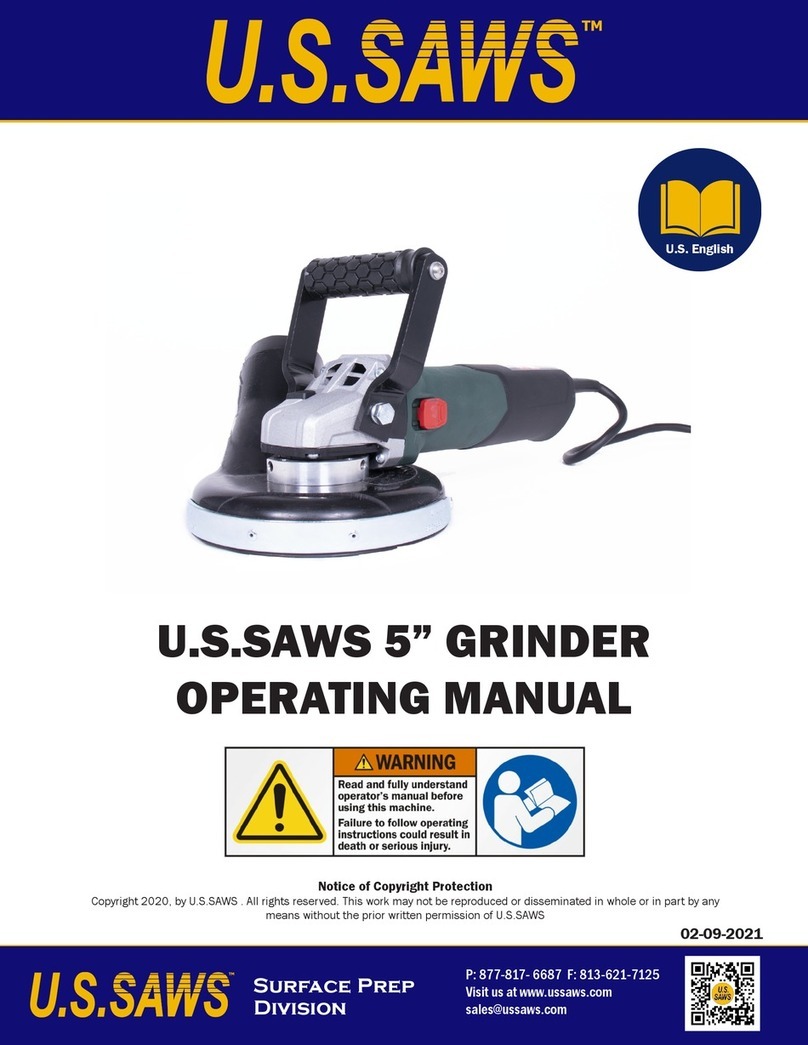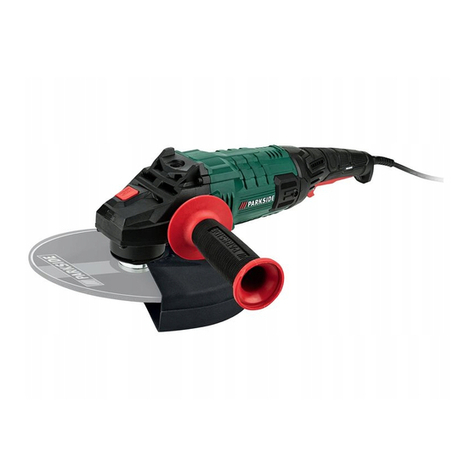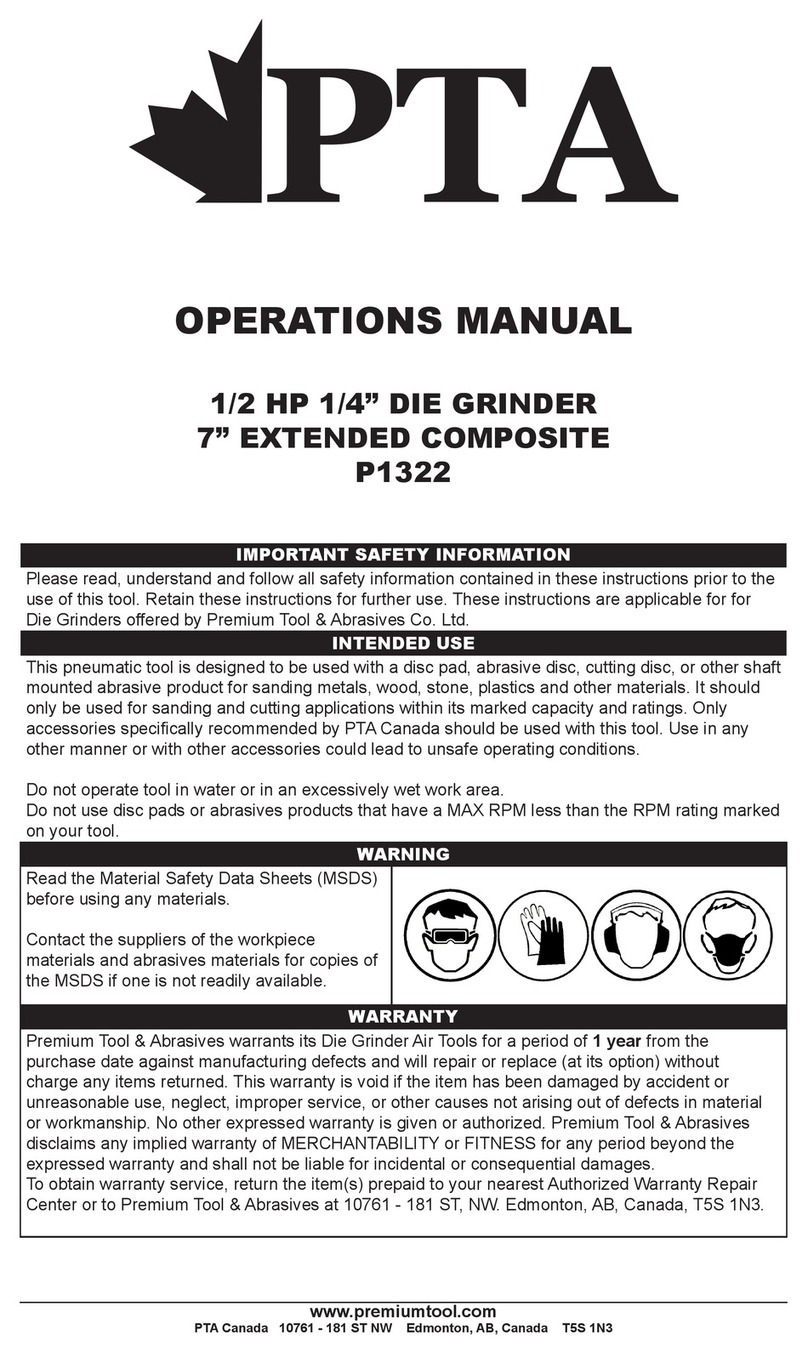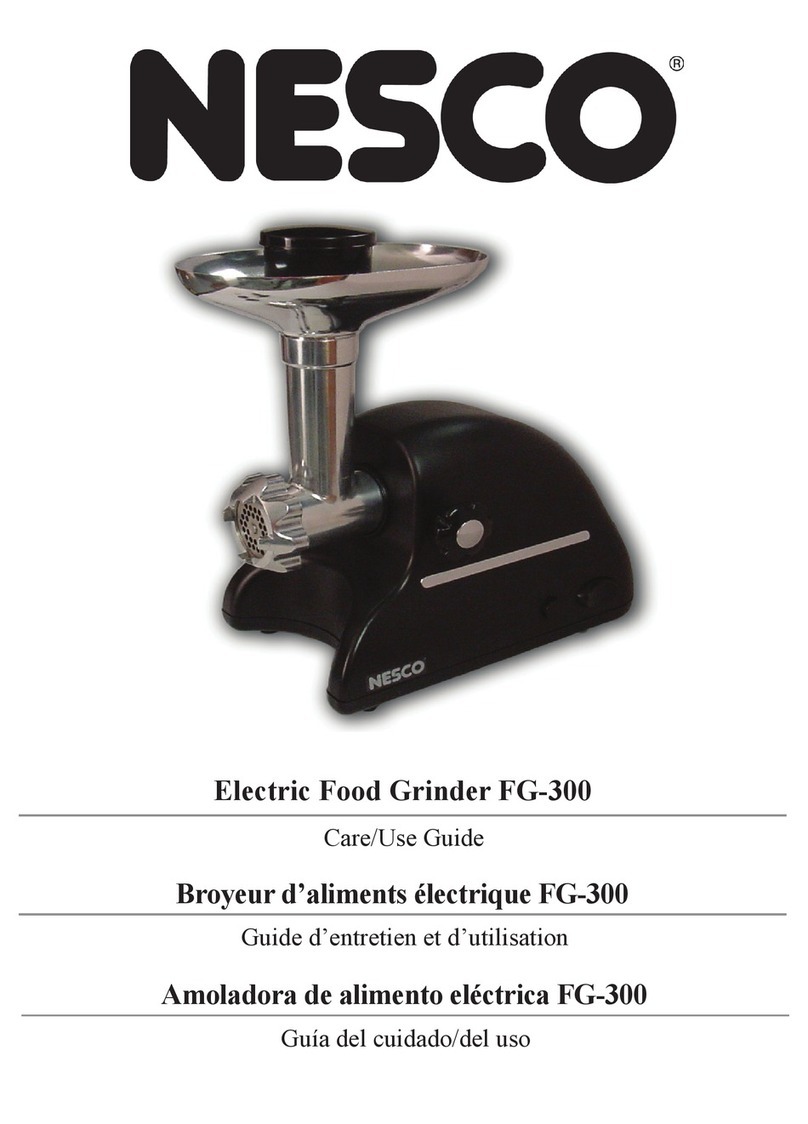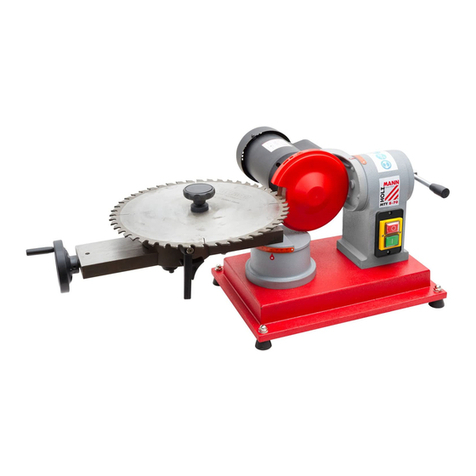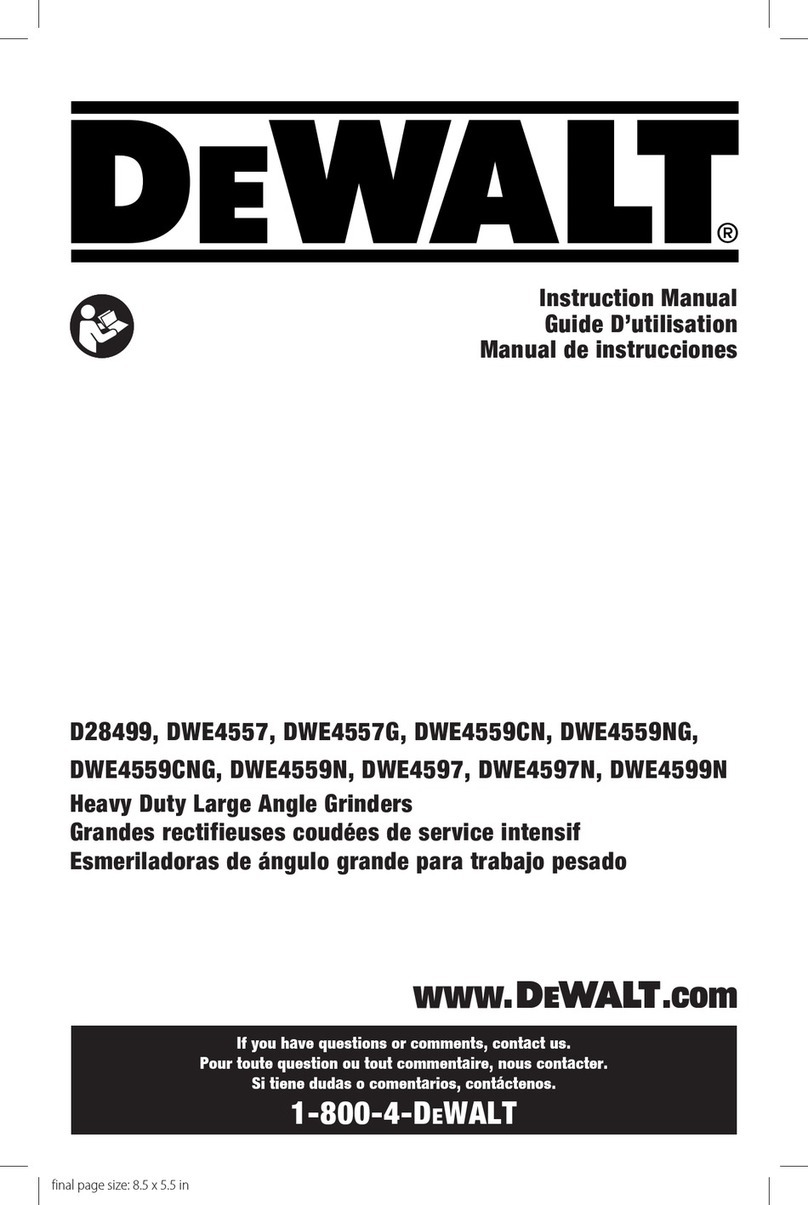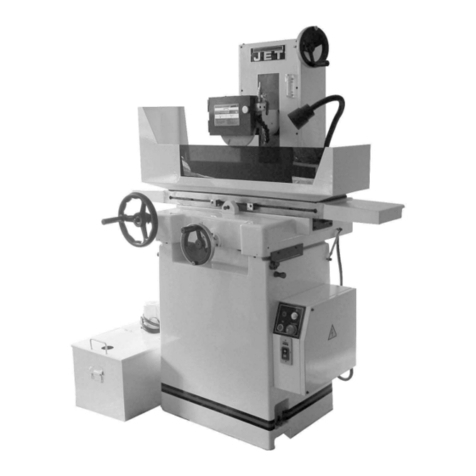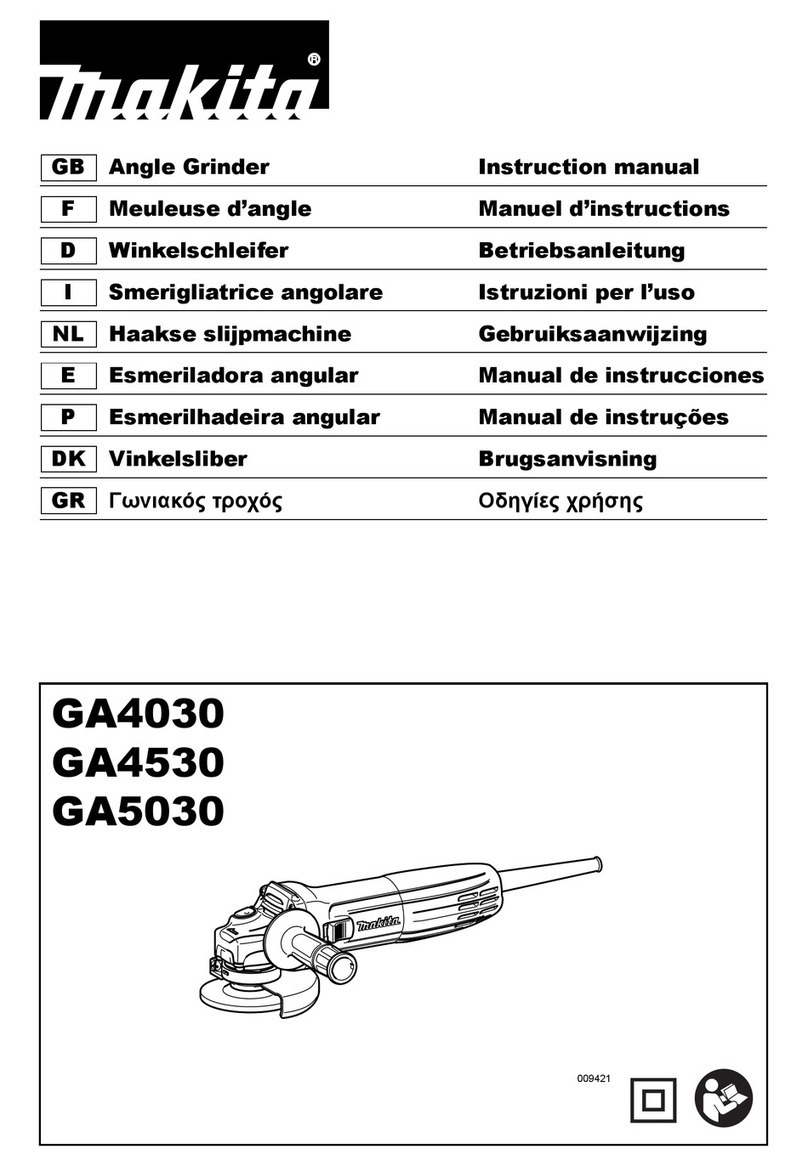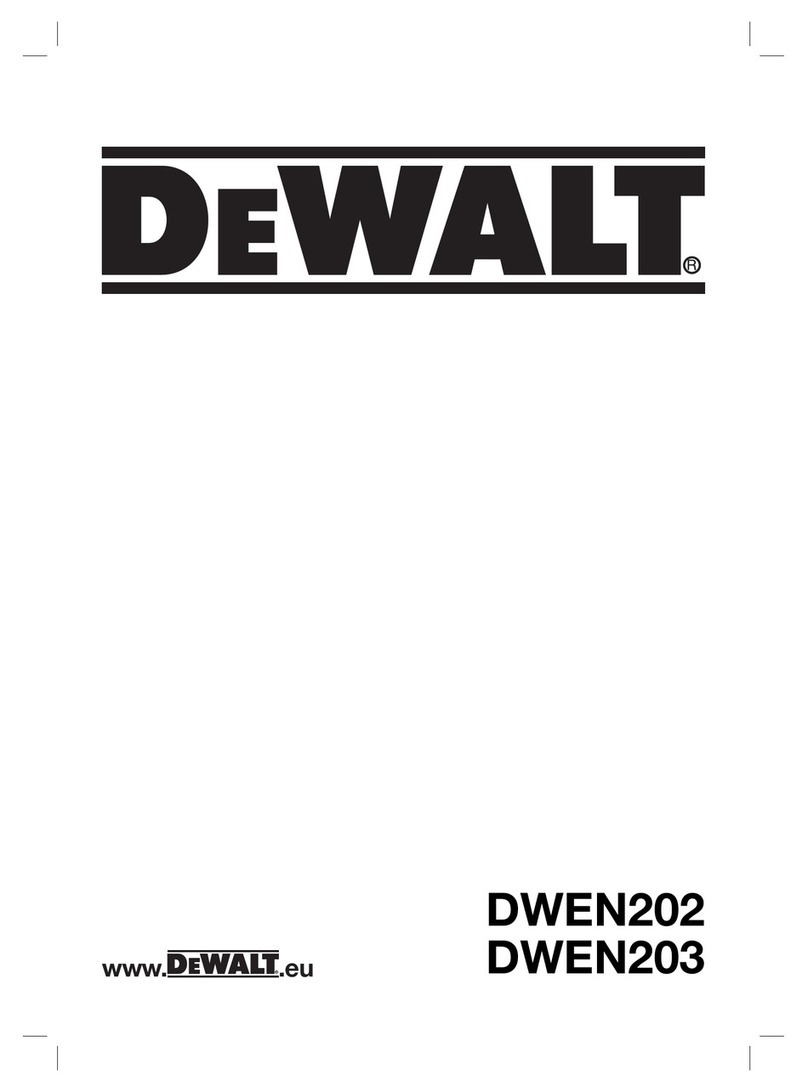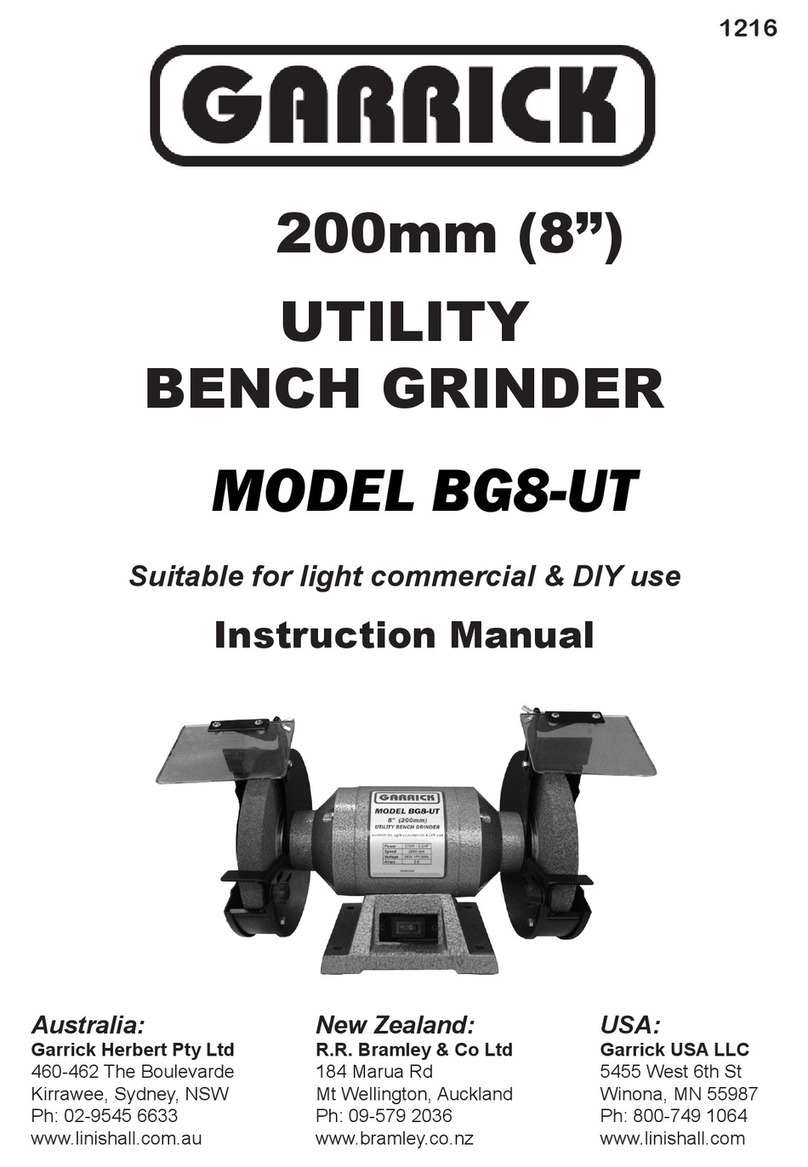
7
Safety Warnings Specific for Grinding and Abrasive
Cutting-Off Operations
a) Use only wheel types that are recommended for your power tool and
the specific guard designed for the selected wheel. Wheels for which
the power tool was not designed cannot be adequately guarded and are
unsafe.
b) The grinding surface of the centre depressed wheels must be mounted
below the plane of the guard lip. An improperly mounted wheel that
projects through the plane of the guard lip cannot be adequately protected.
c) The guard must be securely attached to the power tool and positioned
for maximum safety, so the least amount of wheel is exposed towards
the operator. The guard helps to protect the operator from broken wheel
fragments, accidental contact with wheel, and sparks that could ignite
clothing.
d) Wheels must be used only for recommended applications. For example: do
not grind with the side of the cut-off wheel. Abrasive cut-off wheels are
intended for peripheral grinding; side forces applied to these wheels may
cause them to shatter.
e) Always use undamaged wheel flanges that are of correct size and shape
for your selected wheel. Proper wheel flanges support the wheel, thus
reducing the possibility of wheel breakage. Flanges for cut-off wheels may
be different from grinding wheel flanges.
f) Do not use worn down wheels from larger power tools. Wheels intended
for larger power tools are not suitable for the higher speed of a smaller tool
and may burst.
Additional Safety Warnings Specific for Abrasive
Cutting-Off Operations
a) Do not ‘jam’ the cut-off wheel or apply excessive pressure. Do not attempt
to make an excessive depth of cut. Overstressing the wheel increases the
loading and susceptibility to twisting or binding of the wheel in the cut and
the possibility of kickback or wheel breakage.
b) Do not position your body in line with and behind the rotating wheel. When
the wheel, at the point of operation, is moving away from your body, the
possible kickback may propel the spinning wheel and the power tool
directly at you.
c) When wheel is binding or when interrupting a cut for any reason, switch off
the power tool and hold the power tool motionless until the wheel comes
to a complete stop. Never attempt to remove the cut-off wheel from the cut
while the wheel is in motion otherwise kickback may occur. Investigate and
take corrective action to eliminate the cause of wheel binding.
d) Do not restart the cutting operation in the workpiece. Allow the wheel to
reach full speed and carefully re-enter the cut. The wheel may bind, walk
up or kickback if the power tool is restarted in the workpiece.
e) Support panels or any oversized workpiece to minimise the risk of wheel
pinching and kickback. Large workpieces tend to sag under their own
weight. Supports must be placed under the workpiece near the line of cut
and near the edge of the workpiece on both sides of the wheel
f) Use extra caution when making a ‘pocket cut’ into existing walls or other
blind areas. The protruding wheel may cut gas or water pipes, electrical
wiring or objects that can cause kickback.
Safety Warnings Specific for Sanding Operations
a) Do not use excessively oversized sanding disc paper. Follow
manufacturer’s recommendations, when selecting sanding paper. Larger
sanding paper extending beyond the sanding pad presents a laceration
hazard and may cause snagging, tearing of the disc, or kickback.
Safety Warnings Specific for Wire Brushing Operations
a) Be aware that wire bristles are thrown by the brush even during ordinary
operation. Do not overstress the wires by applying excessive load to the
brush. The wire bristles can easily penetrate light clothing and/or skin.
b) If the use of the guard is recommended for wire brushing, do not allow any
interference of the wire wheel or brush with the guard. Wire wheel or brush
may expand in diameter due to work load and centrifugal forces.
Additional grinder safety
WARNING: When using straight and depressed centre cutting off wheels (type
41 & 42) plus grinding wheels that grind on the edge only (type 1) a cutting
guard or cut-off guard must be fitted.
WARNING: DO NOT operate a grinder without the appropriate guards in place.
Reset the guard if the work angle or the position of the person operating the
machine changes.
WARNING: Always check for a expiry date of the grinding or cutting disc before
use (remove from tool if necessary). Either printed on the label or stamped
on the inner steel ring of the disc. DO NOT use an expired disc it may shatter
in use.
• Do not touch grinding or cutting discs before they have cooled down after
use
• Reset the on/off switch of the tool to the off position whenever the power
is interrupted
• By exerting too much application force, the machine can be subject to
overload. Overload can lead to overheating and damage of the power tool.
After use, continue to run it at no-load for several minutes in order to cool it
down by using the fan of the motor
• When operating the grinder, it is an essential safety requirement that the
correct type of guard is installed for each application to prevent injury.
For example, a cutting guard must be installed when using a cutting or
diamond disc, and a grinding guard must be used with grinding discs
• Grinding tool accessories must be mounted, used and stored in compliance
with the manufacturer’s recommendations
• Use the correct type of cutting or grinding disc for the task and material
being worked on. Check the label on the disc or accessory to find out if it is
appropriate to use on the workpiece
• If discs are supplied with blotters they must be fitted and used correctly.
Not fitting blotters may cause the disc to shatter in use and be a safety risk
• Ensure that the cutting/grinding disc or accessory is fitted correctly and
securely before use. Run the machine with the disc or accessory fitted,
but without load, for a reasonable time before attempting to cut/grind. If
excessive vibration occurs, stop the machine, investigate and correct the
cause before use. Seek professional guidance if you are in doubt about
how to operate the machine safely
• Do not allow discs to become wet or contaminated with oil. If you suspect
that a disc has degraded in storage, or if you are unsure about whether its
expiry date has passed, DO NOT USE AND DISCARD
• Do not attempt to cut or grind magnesium or any alloy that has high
magnesium content
• Hold the machine appropriately to ensure that debris produced does not
land on skin or clothing
• Do not touch the spindle lock button while the tool is operating
• A grinding disc will gradually wear down during use, reducing its size. If
a disc becomes too small to work with easily, stop using it and replace it
with a new disc
Additional safety for super abrasives
• Superabrasives are generally inflexible and could shatter, so must
be handled with the utmost care. Damaged or improperly mounted
superabrasives are dangerous and can cause SEVERE injury to the user
and other people in the vicinity
• Types of superabrasive wheels include diamond cutting discs, welded
metal discs, CBN discs etc. Choose your superabrasive tool carefully,
taking into consideration the workpiece material, the machine dimensions
and capabilities. Make sure the machine does not exceed the maximum
operating speed of the superabrasive disc
• NEVER use superabrasive cutting discs for side grinding, as this might lead
to the disc shattering
• Superabrasive wheels have to be carefully inspected and tested before
mounting. Metal wheels should be subjected to a sound test: hold the
wheel on a mandrel or with a finger inserted through the bore, then tap
it with a non-metallic object at several points and listen each time to the
sound produced. An intact wheel will produce a clear ‘bell like’ metallic
sound. Damaged wheels will give a dull, chattering sound. If in doubt, DO
NOT USE, MARK AS DAMAGED AND DISCARD
396235_Z1MANPRO1.indd 7 03/08/2015 10:28

